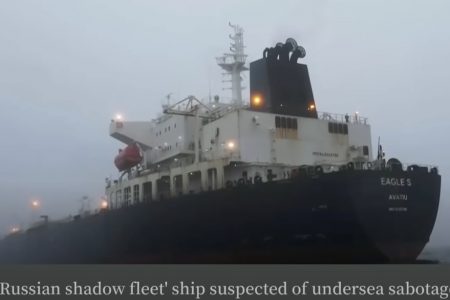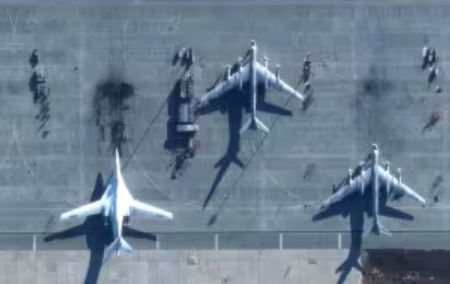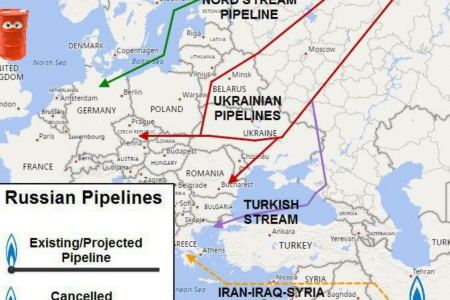
The Philippines faces the threat of territorial encroachment from China
Recently, the Philippines has criticized China’s “aggressive” actions after Beijing sent more than 200 ships to the South China Sea (Vietnam calls it the East Sea). Manila also asked Beijing to withdraw this fleet of ships from the disputed waters.
Specifically, Filipino Defense Minister Lorenzana ordered more than 200 Chinese ships he claimed to be part of China’s maritime militia to leave the reef known as the Whitson Reef (Manila called Julian Felipe) of the Spratlys. In a statement, Mr. Lorenzana affirmed: “We urge the Chinese side to stop this infringement and quickly withdraw ships that are infringing our territorial waters and our territorial sovereignty“. The Philippine defense leader also announced that Manila would steadfastly defend its sovereignty. Later, on Twitter, Philippine Foreign Minister Teodoro Locsin said Manila had sent a diplomatic note protesting against the presence of the aforementioned Chinese vessels. Mr. Locsin also wrote on Twitter: “Diplomacy is a steel punch of the armed forces (Philippines).”
The National Task Force of the West Philippines Sea, an agency under the Manila government responsible for monitoring the reef, said it found Chinese ships anchored in rows at the reef on March 7. In a statement, the task force said: “Despite the favorable weather at that time, the Chinese boats gathered at that reef did not conduct any real fishing activities and were on full white lights all night.” The announcement also stated that the presence of this fleet was “a concern because of overfishing and destruction of the marine environment, and could pose risks to travel. safe at sea.” The Special Forces vowed to continue to implement proactive and peaceful initiatives “to protect the environment, real energy security and freedom of navigation” in the South China Sea.
The above mentioned coral reef named Whitson Reef belongs to Union Beach, located about 175 nautical miles (324 km) west of Palawan province, west of Philippines. According to Manila’s point of view, this reef, which belongs to the Spratlys (Vietnam also asserts its sovereignty here), lies within the exclusive economic zone of the Philippines. China often uses fishing vessels as military ships in its encroachment on islands in the Spratlys.
In an official statement released on March 22, the Chinese Embassy in Manila said it had acknowledged the Philippines’ claims on the matter but said that the deployment of 220 ships near Whitson Reef was a “normal operation” of Chinese fishing vessels.
This is the latest Chinese threat action against the Philippines. Although, since coming to power, Philippine President Rodrigo Duterte has pursued a “befriend” policy with Beijing. Duterte did not object to China’s aggressive actions, nor did he ask Beijing to comply with the 2016 arbitral tribunal’s ruling. Instead, Mr. Duterte relied on Beijing for investment support and funding Manila’s infrastructure projects. Currently, Beijing has donated and committed to provide more COVID-19 vaccine to Manila. In addition, Duterte also tries to promote joint operations with China in the South China Sea.
Will Scarborough’s 2012 event reoccur?
In 2012 it happened that China used the “cabbage” tactic to gain actual control of Scarborough Shoal from the hands of the Philippine military. The “cabbage” tactic “boasted” by a Chinese general was to use different classes of ships, including: first for fishing ships to penetrate (in fact, marine militia ships in disguise fishing ships), the second round is the coast guards, the fishermen patrol, monitor, escort, the third round is the Chinese naval ships. In this way, Filipino ships are small in number and not powerful enough to pass these classes to reach Scarborough. And so, in fact, control of the Shoal was transferred to Chinese ships. Even China’s General affirmed that this strategy can be applied in other places without having to resort to war, and only need “the right time to apply” only.
The General added: “For the small islands, only a few soldiers of the countries are stationed on it, there is no food or even water to drink. If we go on a cabbage strategy, they won’t be able to send food and water onto the islands. Without food supply for one to two weeks, the soldiers would leave the island on their own. Once they leave, they will never be able to return.”
With such a number of mutant fishing vessels coming to the East Reef, it is very likely that China will apply the “Cabbage” tactic to gain actual control of this area.
Risk to Vietnam
Vietnam is also a claimant country for the entire Spratlys (Vietnam calls it the Truong Sa), including the Whitson Reef. The deployment of such a number of marine militia ships (abbreviated to PAFMM) in this area poses a threat to Vietnamese interests here.
Such Chinese maritime militia ships would readily be called upon to engage in any activity conducted by China, using strategic positions to rapidly reach any corner of the South China Sea. Historically, PAFMM has played an important role in many maritime operations, from surveillance to interference with US Navy ships to violent clashes with the Vietnamese side. The stationing of these ships on the Spratlys for the deployment of auxiliary or reserve forces can be made to assert or exercise Chinese control in the South China Sea. The large number of PAFMM vessels can easily hinder or intercept other countries’ naval vessels before they reach targets in active areas.
If the Whitson Reef is lost to China, and China can backfill and militarize it, it will be a significant and worrying escalation for the disputing states in the South China Sea, especially Vietnam. Because Union Reef is located in the heart of a strategic triangle formed by Chinese naval and air bases on the Cross Rock, Subi and Mischief Reef. In addition, the Chinese military bases on Gac Ma (South Johnson Reef, Gaven and Kennan reef have operated long-range surveillance facilities and contain communication equipment.
China’s consolidation of control over the Whitson Reef may weaken Vietnam’s ability to control this area. Currently, Vietnam controls 3 entities here, namely Sinh Ton (Sin Cowe Island), Collins Reef, and Lansdowne Reef. All three of these entities could be directly threatened by the increased presence and activity of China in Union Beach. The placement of a large PAFMM here represents a major threat to Vietnam, especially considering that China had previously threatened to attack Vietnam with force when requesting Hanoi to stop its oil and gas exploration activities at lots 136.3 and 07.3.
So far, although the Philippine side has spoken out strongly, but still has not seen a response from the Vietnamese side. Even the Foreign Ministry spokesperson has not yet spoken out, although often the voice of the spokesperson of Vietnam’s Ministry of Foreign Affairs of is very general and does not imply anything.
Thoibao.de (Translated)




























